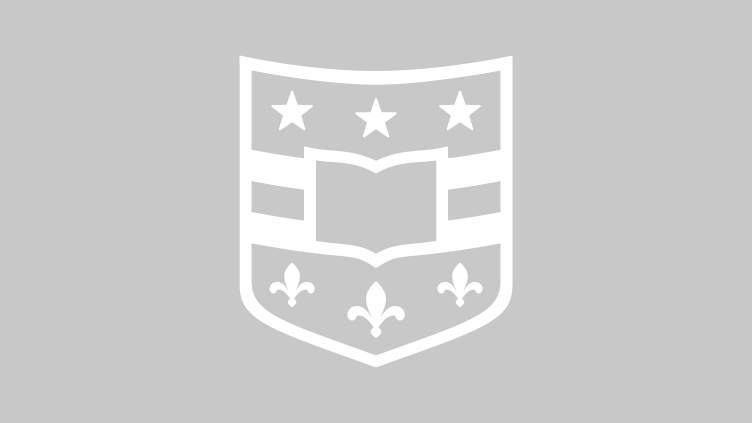Chemist receives funding to unravel tricks of neuronal wiring
Joshua Maurer, Ph.D., assistant professor of chemistry in Arts & Sciences at Washington University in St. Louis, has received a four-year, $1,216,000 grant from the National Institute of Mental Health for research titled, “Unraveling Development: New Materials for Understanding Neuronal Wiring.” Maurer’s long term objective is to develop methodology that allows the study of a variety of neuronal wiring processes. He is starting by unscrambling a phenomenon known as midline crossing using zebrafish. During development, neurons from the right eye cross the midline of the brain to make a connection in the left hemisphere.
Six Washington University professors named AAAS fellows
Six faculty members from Washington University in St. Louis have been named fellows of the American Association for the Advancement of Science (AAAS), the world’s largest general scientific society. The highest honor awarded by AAAS, the rank of fellow is bestowed upon members by their peers in recognition of scientifically or socially distinguished efforts to advance science or its applications.
WUSTL program in national spotlight
Washington University is in the spotlight for its pivotal role in the Genomics Education Partnership, a collaborative effort to provide research experience in genomics to undergraduate classrooms across the country.
Researchers solve piece of large-scale gene silencing mystery
PikaardA team led by Craig Pikaard, Ph.D., WUSTL professor of biology in Arts & Sciences, has made a breakthrough in understanding the phenomenon of nucleolar dominance, the silencing of an entire parental set of ribosomal RNA genes in a hybrid plant or animal. Since the machinery involved in nucleolar dominance is some of the same machinery that can go haywire in diseases such as cancer, Pikaard and his collaborators’ research may have important implications for applied medical research. Click here for a podcast from Genetic Engineering & Biotechnology News: Interview with Craig Pikaard.
WUSTL research to advance clean coal technology
Photo by Joe AngelesChancellor Mark S. Wrighton announced during a news conference Dec. 2 the establishment of the Consortium for Clean Coal Utilization.
Washington University research to advance clean coal technology
Washington University Chancellor Mark S. Wrighton announced during a Dec. 2 news conference the establishment of the Consortium for Clean Coal Utilization. The university has dedicated more than $60 million in financial resources during the past year to advance education and research related to energy, environment and sustainability.
Study on wildlife corridors shows how they work over time
Ellen Damschen & Forest ServiceA new paper on ecological corridors co-authored by Washington University biologists Ellen Damschen and John Orrock in the Proceedings of the National Academy of Science, was published online Dec. 1 as part of a special issue on movement ecology. This research reveals that by understanding how species move, you can predict if and how corridors work.
Research-based undergraduate course expands beyond WUSTL
ElginWashington University in St. Louis is in the spotlight for its pivotal role in the Genomics Education Partnership, a collaborative effort to provide research experience in genomics to undergraduate classrooms across the country. At the helm of this mission is Sarah C.R. Elgin, Ph.D., WUSTL professor of biology and professor of education in Arts & Sciences, as well as professor of biochemistry & molecular biophysics and professor of genetics in the School of Medicine.
Precise measurement of phenomenon advances solar cell understanding
Researchers at Washington University in St. Louis have shed light on a basic process that could improve future solar cells. Dewey Holten, Ph.D., professor of chemistry in Arts & Sciences and graduate student Hee-eun Song have directly measured the rate of hole transfer between identical porphyrin compounds in their ground states. These results are key to understanding the fundamental processes underlying charge separation in this sort of structure and have applications for improving the efficiency of solar cells.
New gene silencing pathway found in plants
Biologists at Washington University in St. Louis have made major headway in explaining a mechanism by which plant cells silence potentially harmful genes. A team led by Craig Pikaard, Ph.D., WUSTL professor of biology in Arts & Sciences, has published a paper this month in Cell, that explains how RNA polymerases work together to use the non-coding region of DNA to prevent destructive, virus-derived genes from being activated.
Older Stories
